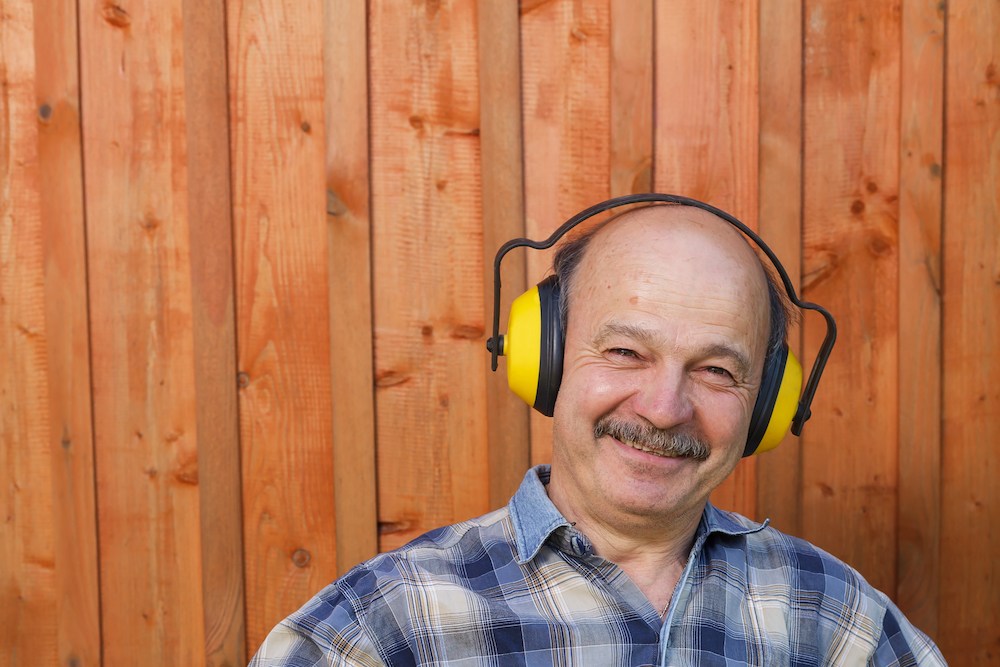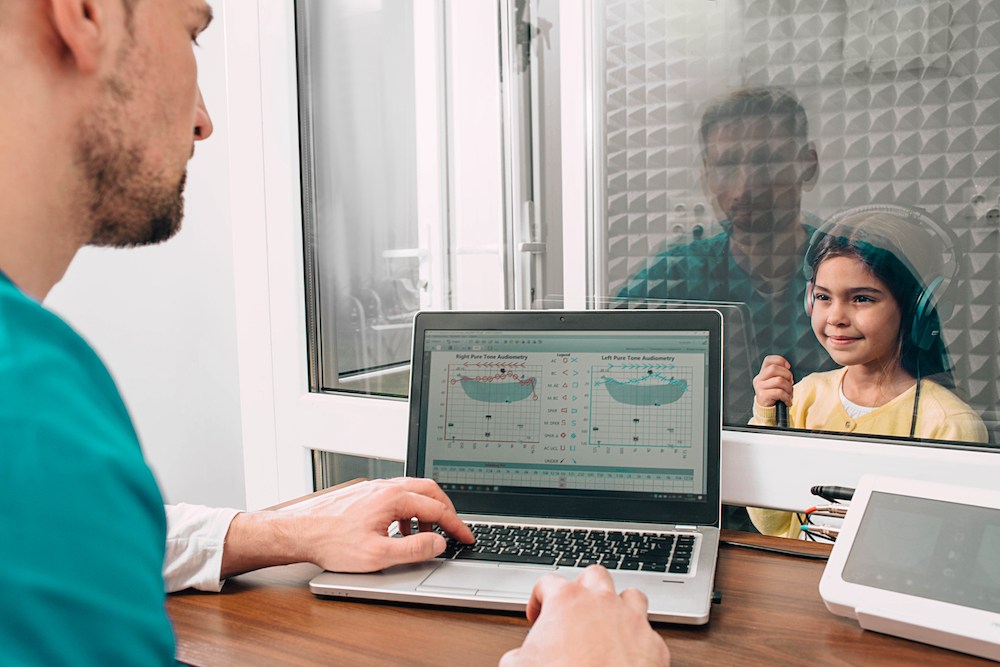How to Protect Your Hearing During the Fall Season
Fall brings seasonal changes to your routine and activities that can
We’ve moved to our new permanent location! Learn More

By: admin | May 27, 2024
In today’s digital age, it’s not shocking to see mobile applications becoming a regular part of hearing health. With each technological leap, we unlock new ways to enhance our lives. For those coping with hearing loss, the question is not just about the availability of tools to help – it’s about how effective these tools are. Mobile apps aimed at better hearing have popped up as one such tool, offering a handy and affordable alternative to traditional methods. But do they live up to this claim? This article delves into the functionality of these apps and their role in the wider landscape of hearing health solutions.
The healthcare sector has undergone a significant transformation with the advent of mobile technology. Smartphones and tablets have turned into powerful tools, assisting in everything from scheduling appointments to tracking symptoms.
Specifically for hearing health, mobile technology offers a variety of benefits. These include: easy access to hearing tests, the ability to adjust hearing aids remotely, and resources for auditory training. This progress has not only increased convenience but also given you more control over your own care.
In the realm of hearing health, mobile applications have become a strong ally for both patients and hearing instrument specialists. They offer a range of features designed to enhance the user experience with their hearing aids. But what exactly do these apps offer? Let’s find out.
Firstly, most of these apps allow you to adjust your hearing aid settings from your smartphone. This means you can alter volume levels, switch programs, and even fine-tune frequencies based on your environment – all without having to touch your hearing aid.
Secondly, some apps offer a ‘find my hearing aid’ feature. Losing small devices like hearing aids can be stressful. With this feature, you can find them easily using your phone.
Thirdly, many apps offer connectivity options that allow you to stream audio directly from your phone or other devices to your hearing aids. This could include music, phone calls or even television audio.
However, it’s crucial to note that not all apps are created equal. Some may have more features than others or may only be compatible with certain brands or models of hearing aids. Always consult with your hearing instrument specialist before downloading an app to ensure it meets your specific needs and is compatible with your device.
Choosing the right hearing app can be like picking the right tool from a toolbox. Just as you wouldn’t use a hammer to screw in a nail, different hearing apps serve different purposes and it’s important to pick the one that best suits your needs. Some are designed to assist with hearing aid control, while others focus on tinnitus management or auditory training.
Hearing aid control apps, as their name suggests, allow you to manage your hearing aids directly from your smartphone. This is similar to having a remote control for your television – you can adjust volume levels, switch programs and even fine-tune frequencies based on your environment. On the other hand, tinnitus management apps offer tools like sound therapy and relaxation exercises which can be helpful during sudden flare-ups of tinnitus.
Finally, auditory training apps are like personal trainers for your ears. They provide exercises designed to improve your listening skills and help you better understand speech in noisy environments. Each type of app offers unique benefits so it’s important to discuss with your hearing instrument specialist which one might be most beneficial for you.
Now, let’s look at how these hearing applications work. Essentially, they function as a bridge between your hearing aids and your smartphone. They utilize Bluetooth technology to establish a connection, allowing you to control your hearing aids with just a few taps on your phone screen. According to the World Health Organization, over 5% of the world’s population – that’s around 466 million people – experience disabling hearing loss.
These apps are designed with user-friendly interfaces to ensure easy operation for all users. They leverage advanced algorithms and digital signal processing techniques to provide high-quality sound and customizable settings for different listening environments. A surprising fact is that only 17% of those who could benefit from a hearing aid actually use one, according to the National Institute on Deafness and Other Communication Disorders (NIDCD). With such helpful tools like these apps becoming more prevalent, it is hoped this statistic will improve in the future.
Understanding the role of smartphone compatibility is important when considering hearing apps. Not all smartphones are designed to be used with all the various hearing apps available. Compatibility is key for seamless operation and optimal user experience.
Your smartphone serves as a control center for your hearing aid via these apps. This makes it important that your phone’s operating system (OS) supports the app you wish to use. Some apps are designed exclusively for iOS devices (iPhones and iPads), while others work best on Android devices. Here’s a quick checklist to help you ensure compatibility:
Understanding smartphone compatibility is essential when considering hearing apps. With the right match, these apps can truly enhance your experience with hearing aids, offering convenience and control right at your fingertips. Always consult with your hearing health professional before downloading an app to ensure it meets your specific needs and is compatible with both your device and smartphone.
Let’s examine the effectiveness of hearing mobile apps. Here are a few key points to consider:
The value of these applications is increasingly recognized by both patients and hearing health professionals. The combination of convenience, control, and customization they offer has the potential to significantly enhance your experience with hearing aids. However, it’s important to note that while these apps can be a useful tool, they should not replace regular check-ups with your hearing instrument specialist. Always consult with them before making any changes to your hearing aid settings or trying out new tools.
Just like any other technology, hearing aid applications come with their own set of advantages and disadvantages. It’s important to weigh these pros and cons before deciding if they’re the right tool for you.
On the positive side, these apps offer a level of convenience that’s hard to match. They allow you to adjust your hearing aid settings from anywhere, eliminating the need for manual adjustments on the device itself. Additionally, features like ‘find my hearing aid’ and direct audio streaming can make daily life easier and more enjoyable. However, it’s not all positive. Some users may find these apps difficult to use due to their complexity or compatibility issues with certain smartphones or hearing aids. Also, reliance on these apps should never overshadow the importance of regular consultations with your hearing instrument specialist.
In the world of hearing health technology, traditional hearing aids and advanced devices may seem like they can’t coexist. On one side, you have the time-tested reliability of traditional hearing aids. On the other, there’s the innovative convenience advanced technology offers through mobile apps. But is one really better than the other?
It’s not about picking sides but understanding that these two can work together for your benefit. Traditional hearing aids provide essential support for your hearing needs, while mobile apps enhance this support with added features and flexibility. It’s all about what works best for you and your unique situation.
In the digital age, with the rise of health-related mobile apps, privacy and safety have become key concerns. As users, you share sensitive information with these apps, which raises questions about how this data is handled.
One potential issue is the misuse of your personal data. A solution to this problem lies in thoroughly reviewing the privacy policies of any app before use. These policies should clearly state how your data will be used and protected. It’s also important to use apps that are recommended by trusted hearing health professionals to ensure they adhere to strict privacy and safety standards.
Choosing the right hearing app can feel like finding a needle in a haystack, but with the right guidance, it doesn’t have to be.
Firstly, identify your needs. Are you looking for an app that allows you to control your hearing aid settings? Or perhaps one that offers tinnitus management tools? Once you’ve identified what you need from an app, this will help narrow down your options. Secondly, consult with your hearing instrument specialist. They can provide recommendations based on their professional experience and knowledge of your specific situation. It’s not just about finding any app – it’s about finding the right one for you!
As we’ve explored the world of mobile apps for better hearing, it’s clear that these tools offer a new level of convenience and control. Remember: while these apps can provide valuable support, they should not replace regular check-ups with your hearing instrument specialist. We encourage you to use them as a supplement rather than a substitute for professional care.
They can enhance your experience with hearing aids, offering you the ability to adjust settings and stream audio directly from your device. However, they are not a one-size-fits-all solution and should be used under professional guidance.
At Hearing At Home Mobile Hearing Center, we’re here to help you navigate this digital world. If you have questions about mobile apps for better hearing or need assistance in selecting hearing aids that suit your needs, don’t hesitate to reach out to us at our Harrisonburg VA location at (540) 908-9494.

Fall brings seasonal changes to your routine and activities that can
By: admin | November 18, 2025

The way hearing care is viewed is gradually shifting. In the past, many
By: admin | September 24, 2025

Wearable technology has changed how we track our daily health – from
By: admin | May 23, 2025
